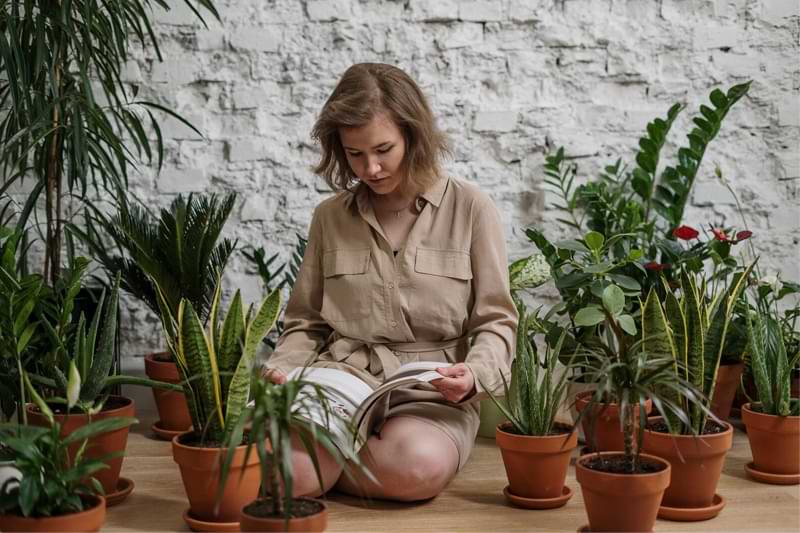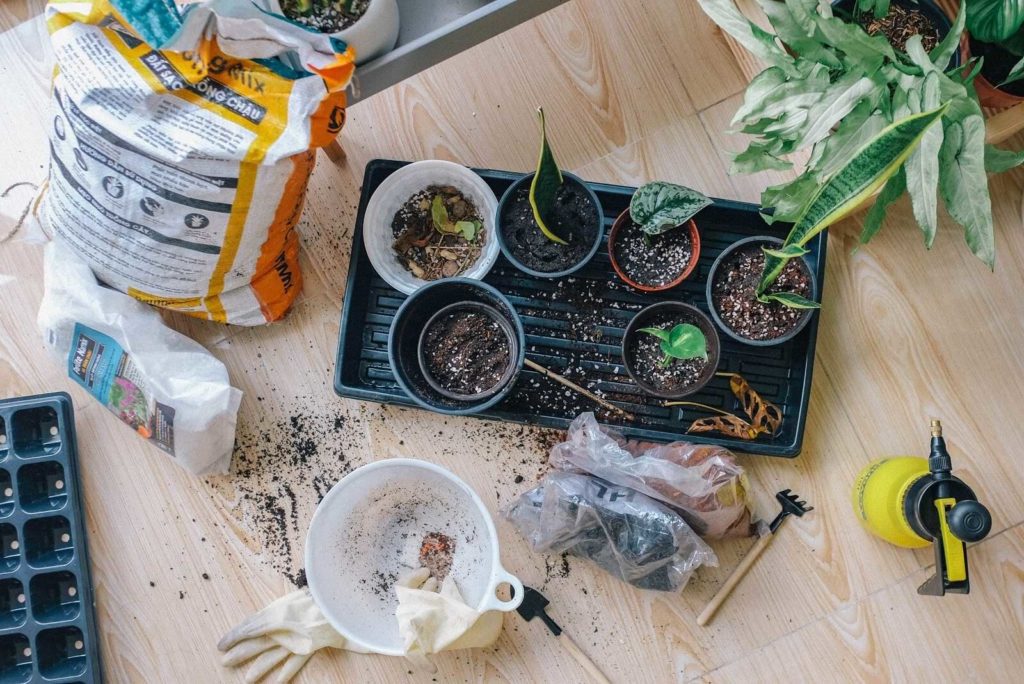Proper repotting is an essential element of growing a bonsai tree. Novice bonsai enthusiasts are often intimidated by the concept; but a little faith and a few good pointers are all it takes to cultivate a healthy tree (and a confident green thumb!).
This article answers a few common beginner’s questions and provides a step-by-step guide to repot a bonsai tree.
Repotting a Bonsai Tree: Your FAQs Answered!
FAQ #1: “Why Do I Need to Repot My Bonsai Tree?”
In nature, trees have a lot of room to develop massive root systems. These complex networks stretch into the soil to absorb vital nutrients and water. Since your bonsai tree lives in an extremely limited environment, it needs your help to survive.
Repotting replenishes the essential nutrients your tree consumes quickly in limited soil. It also prevents root binding, which happens when a root system runs out of space and begins to coil around itself.
FAQ #2: “Do Bonsai Trees Need Special Soil?”
One of the reasons we repot bonsai trees is to replace depleted soil with fresh, nutrient-rich soil. However, your typical potting mix won’t cut it. Bonsai trees need more aeration than most plants, meaning their soil needs to allow more air to permeate below the surface.
Specialty bonsai soil is often a mix of the following: volcanic rock, pumice stone, gravel, and/or akadama (a type of Japanese clay). You can purchase bonsai soil online or at a brick-and-mortar nursery. You can also mix your own at home with the ingredients listed above; just be sure to research the optimal composition for your tree type beforehand.
FAQ #3: “How Do I Know When I Need to Repot My Bonsai Tree?”
As a rule of thumb, an established tree will need repotting once every two years. However, this can vary depending on the tree, the caretaker, and the environment. Look for the following clues:
- Water retention: When your tree has sufficient wiggle room below ground, water will quickly seep from the drainage hole at bathtime. When water begins to take more time to pass through the soil, it’s likely your tree’s roots have compacted.
- Runaway roots: If you notice roots crawling through the drainage hole or creeping across the surface soil, they’ve run out of space and are in need of a trim.
- Root binding: Lastly, before you decide to repot a bonsai tree, examine its root ball. If the roots are beginning to wrap around themselves, your tree is becoming root-bound. Without maintenance, this will eventually choke and starve your plant.
FAQ #4: “What Time of Year Should I Repot My Bonsai Tree?”
Spring repotting takes advantage of a sweet spot in a bonsai’s growing cycle. As your tree comes out of winter dormancy, energy storage shifts from the roots to newly budding leaves.
This means your tree is less dependent on energy stored in trimmed roots and is best suited to recover from a stressful haircut.
Bonsai Beware: Observe your tree closely and repot as soon as it begins to bud—or you might miss your window of opportunity.
FAQ # 5: “Can I Repot My Bonsai Tree Off-Season?”
Maybe spring slipped by. Or you notice your tree is root-bound later in the year. Off-season bonsai repotting is not ideal but is sometimes necessary. Repotting during the summer or fall can be done (avoid winter at all costs), but be sure to minimize the amount of roots you remove, as your tree is not in the optimal stage to recover.
FAQ #6: “How Do I Select a Bonsai Tree Pot?”
Whether for size or aesthetic reasons, you may be moving your bonsai to a new pot. You’ll want to consider four factors:
- Drainage: A bonsai pot needs a large drainage hole covered by a mesh screen to prevent erosion.
- Aesthetics: Your pot is an essential element of the “bonsai effect.” Choose one that complements your tree’s appearance.
- Size: Choose a pot that gives your tree the appropriate amount of space for what you’re trying to achieve. Size and depth also have a substantial impact on aesthetics.
- Wiring: If you plan to “train” your tree to grow in a certain direction, you need a pot with wire holes. A bonsai pot also needs wires attached to the drainage mesh to stabilize the root ball.
For a deep dive into each of the elements listed above, check out our guide “4 Tips to Choosing a Bonsai Tree Planter.”

How to Repot a Bonsai Tree: Step by Step
If you’ve made it this far, you know everything you need to know about repotting a bonsai tree—except how to do it!
Follow these beginner-friendly steps for total bonsai success:
- Remove the tree: At this point, root growth should be so dense that pushing on the drainage hole pops your tree right out of the pot.
- Brush away soil: Using your fingers or a root rake, scrape in a radial pattern from the center outwards to remove soil clinging to the root ball.
- Spritz with water: This keeps the root ball moist while you trim and minimizes stress.
- Trim the roots: The objective is to maintain a radial shape while removing no more than 25% of the existing root system. Cut away any pieces that are growing haphazardly.
- Test the fit: Once you’ve cleaned and trimmed your roots, hold the bonsai inside your pot. Do the roots touch the pot’s outer edges? If so, trim them further.
- Wire the root ball: Once your root ball is the ideal size, stabilize it by affixing the wires attached to the drainage mesh.
- Add fresh soil: Fill the pot partially with fresh potting soil. You’ll want to work the soil into the empty spaces in the root mass for added support.
- Fill pot with soil: Next, fill the pot up with the remaining soil and pat with the palms of your hands to settle.
- Water generously: This kicks off the recovery process and prevents the dry soil from stealing essential nutrients stored in your tree’s roots.
- Place in a safe spot: Your tree will be vulnerable until it establishes itself in its new home. Keep it away from strong wind or any harsh environmental factors.
Et voila! You’ve given your tree a nutrient-rich new home to grow happy and healthy through the growing season. Great work!
Bonsai With Us!
The Bonsai Resource Center is here to provide you with the tools you need to keep your tree healthy and strong. Explore our other articles, visit our online shop, and connect with other bonsai lovers in our Facebook group to learn everything you need to know about this rewarding hobby!



